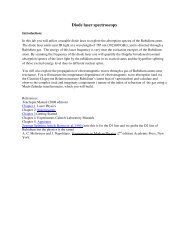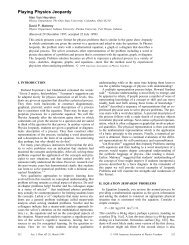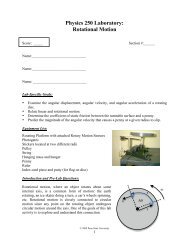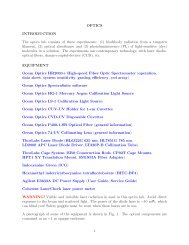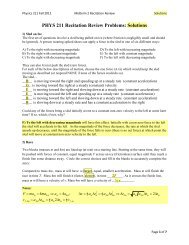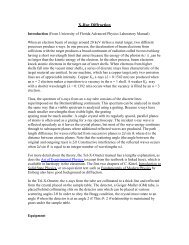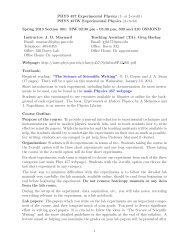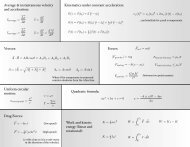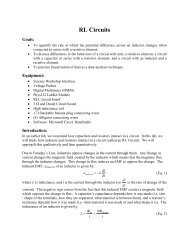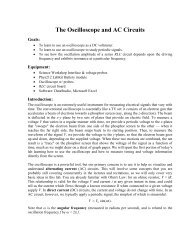Static Electricity (Lab 01)
Static Electricity (Lab 01)
Static Electricity (Lab 01)
You also want an ePaper? Increase the reach of your titles
YUMPU automatically turns print PDFs into web optimized ePapers that Google loves.
Now, hold an insulator (e.g. the end of a plastic pen or the glass rod, provided that it has been<br />
discharged) near each tape and observe what happens. (Make sure that you do not allow the<br />
insulator to touch the tape.)<br />
Q10. Describe the interaction between the insulator and each strip.<br />
Insulator/T-strip interaction: (a) no interaction (b) they attract (c) they repel<br />
Insulator/B-strip interaction: (a) no interaction (b) they attract (c) they repel<br />
Q11. Using a few sentences and a clear sketch, explain these observations. Your sketch should<br />
show how the different charges in the insulator (i.e., electrons & protons) are distributed when<br />
the insulator is far away from a charged tape strip and when it is close to a charged tape strip.<br />
Though the electrons aren’t free to move in the insulator they are still free to shift, enabling a<br />
weak (compared to the conductor) polarization in the insulator<br />
Sketch:<br />
Q12. Based on your observations, which was stronger: the interaction between the conductor and<br />
the tape strips or the interaction between the insulator and the tape strips? Explain this<br />
observation.<br />
It was hard to see, but the conductor should more strongly attract the tape than the insulator



